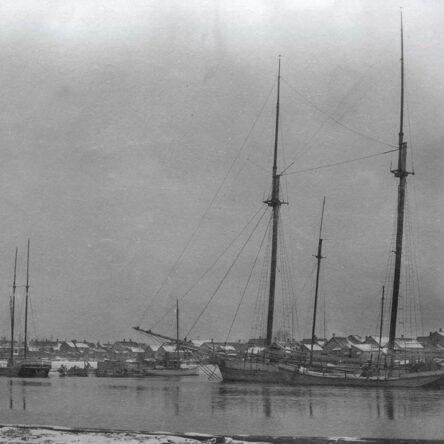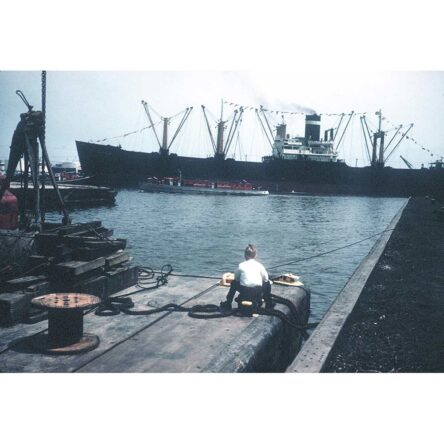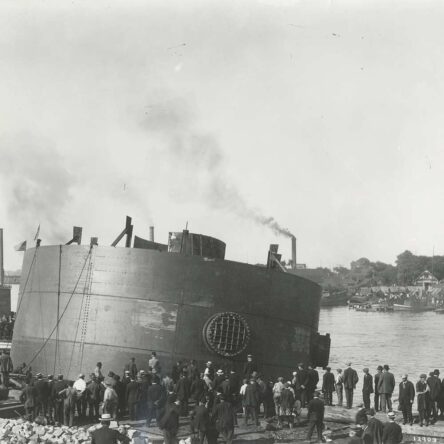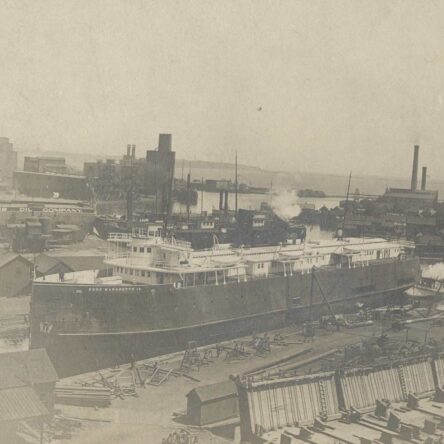Harbor View Plaza/Jones Island
The piece of land you see as you peer across the Milwaukee River is known as Jones Island. Originally a peninsula, the history of Jones Island began with the Potawatomi using the marshy strip of land as a fishing and wild rice harvesting village in the summer.
After the forced removal of Native American populations from the area, settlers took to using the area for ship building including one, James Monroe Jones, who opened a shipyard there in 1854. In 1857, the U.S. Army Corps of Engineers created a new harbor access channel, the so called “Straight Cut,” which turned the peninsula into a true island, and from that point forward, the land became known as Jones Island.
What Jones Island is most remembered for is the European immigrants who settled there in the 1870s. Pomeranian Germans and Polish Kaszubes filled in the marsh and started a fishing village. At one point around the turn of the 20th century as many as 1,600 people populated the village which became known for its work ethic and boisterous gatherings hosted at the many saloons and dance halls on the island.
The residents of the island did not own the land they lived on and were technically squatters. This meant that they did not pay property taxes and thus received minimal support and services from the city government. While challenges from the Illinois Steel Company who hoped to expand their docking facilities on the island at the end of the 1800s failed, it was the City of Milwaukee that ultimately removed residents. The city built a garbage incinerator adjacent to Jones Island in 1902, and a sewage plant in 1911. In 1914, the city condemned the land and by the 1920s, all but a few residents remained on the island. City engineers began a landfill process to create inner harbor facilities on the island’s west side. In 1926, the City of Milwaukee completed what was, at the time, a state-of-the-art sewage treatment facility, the largest of its kind at the time. The Jones Island facility pioneered the revolutionary use of activated sludge to manufacture MILwaukee ORGanic NITrogen (Milorganite) as an agricultural fertilizer. Although most facilities now use a similar process, Milwaukee was the first to do so. In 1974, the site was designated a historical civil engineering landmark.
The island, which has now reverted to a peninsula, is entirely industrial, known for its piles of road salt, docked ships, and the distinctive aroma of Milorganite. However, one small, .15-acre remnant remains of the Kaszube legacy, Kaszube’s Park, which occupies the property footprint of Jones Island’s last resident, Felix Struck.
The scene you see in the Viewaukee viewer also relates to water treatment history, as the crews in the photo are floating a fabricated water intake for transportation and submersion to be used in the flushing system, then under construction near McKinley Beach.




